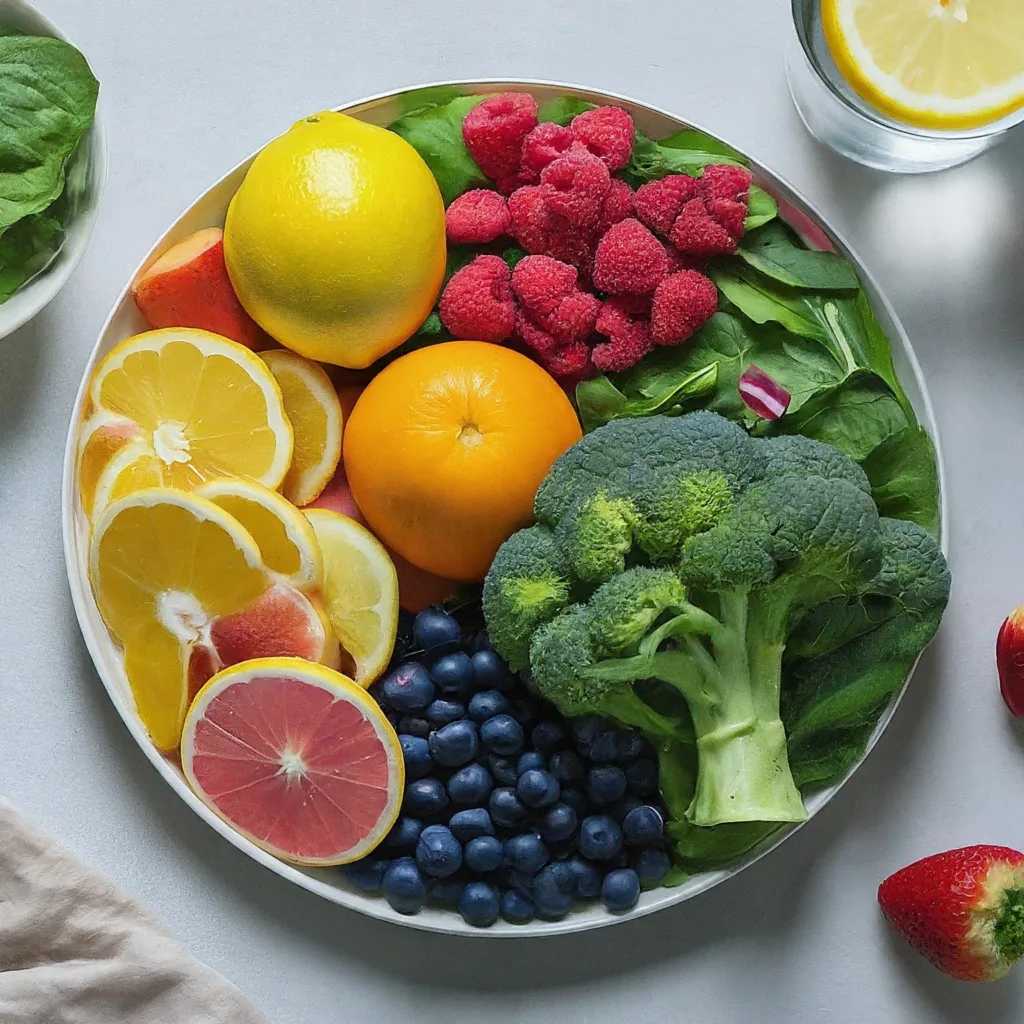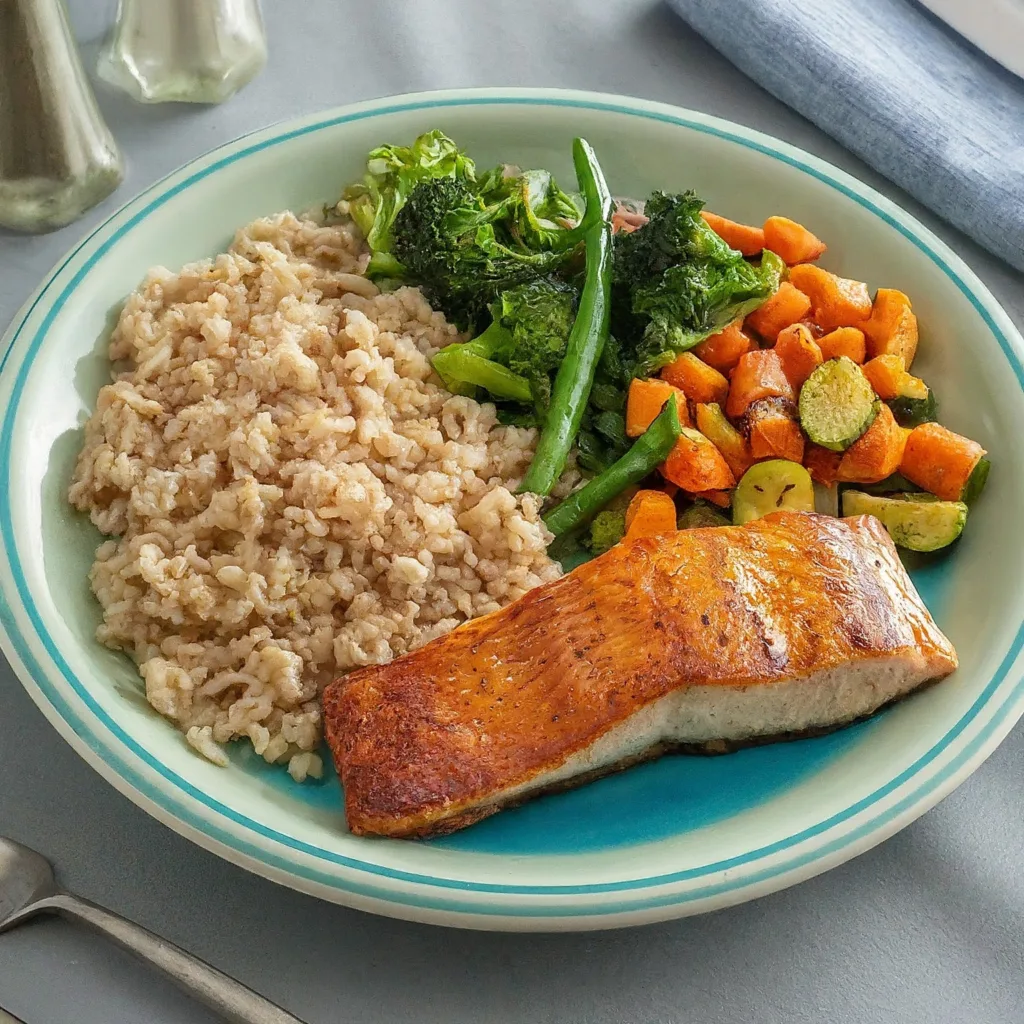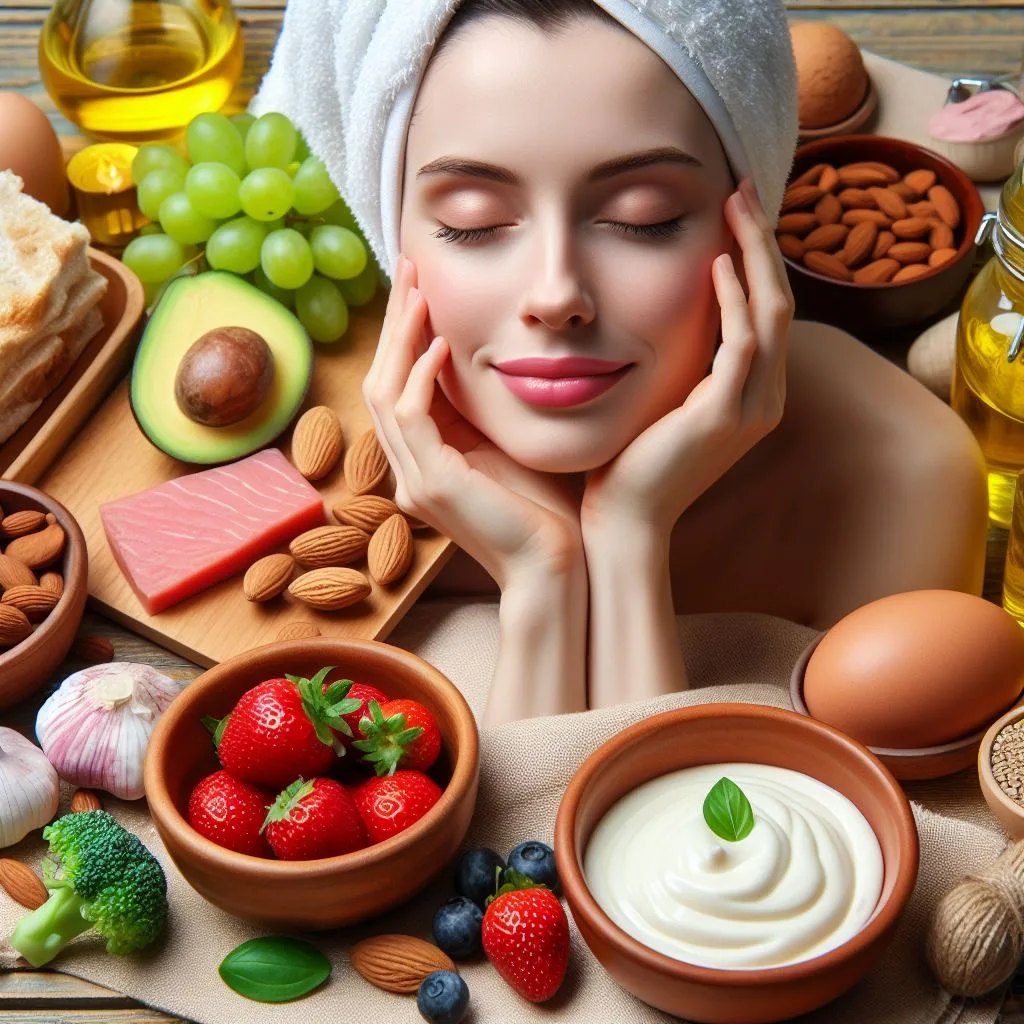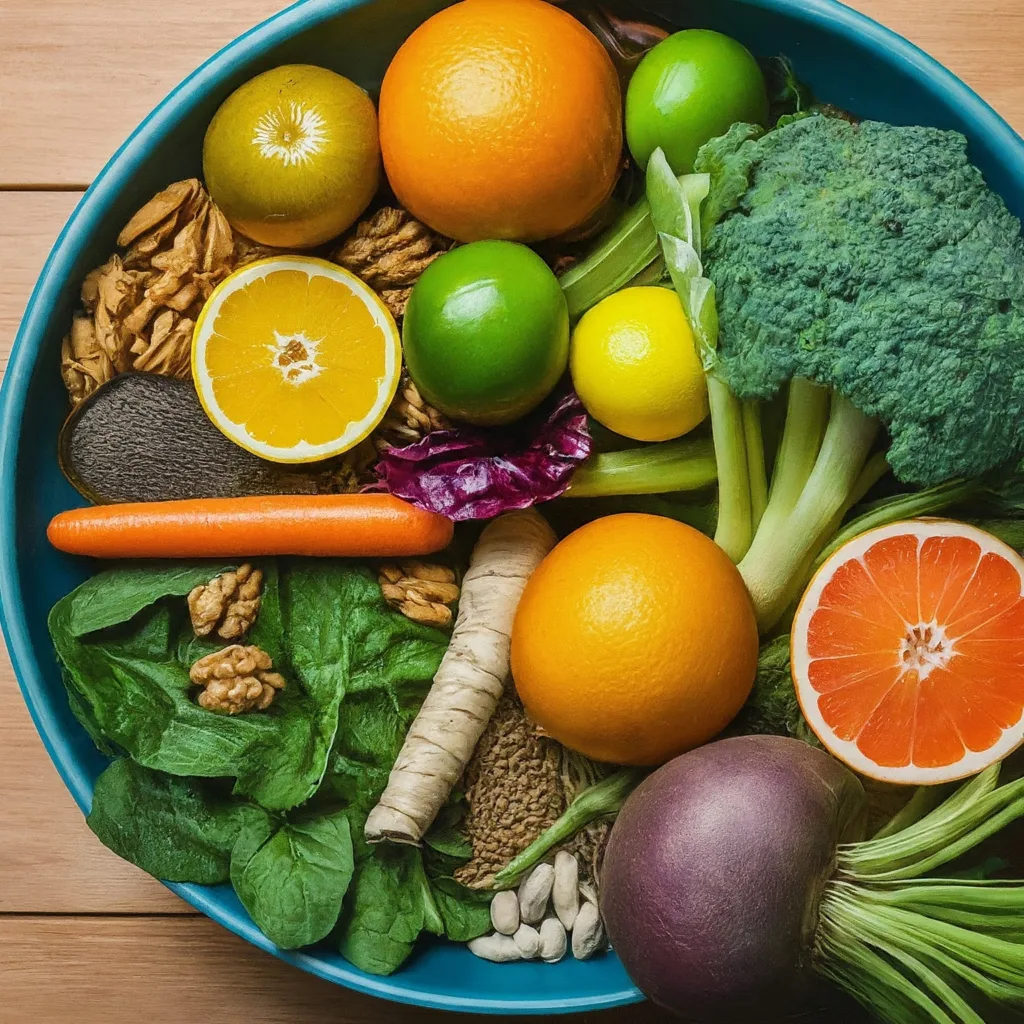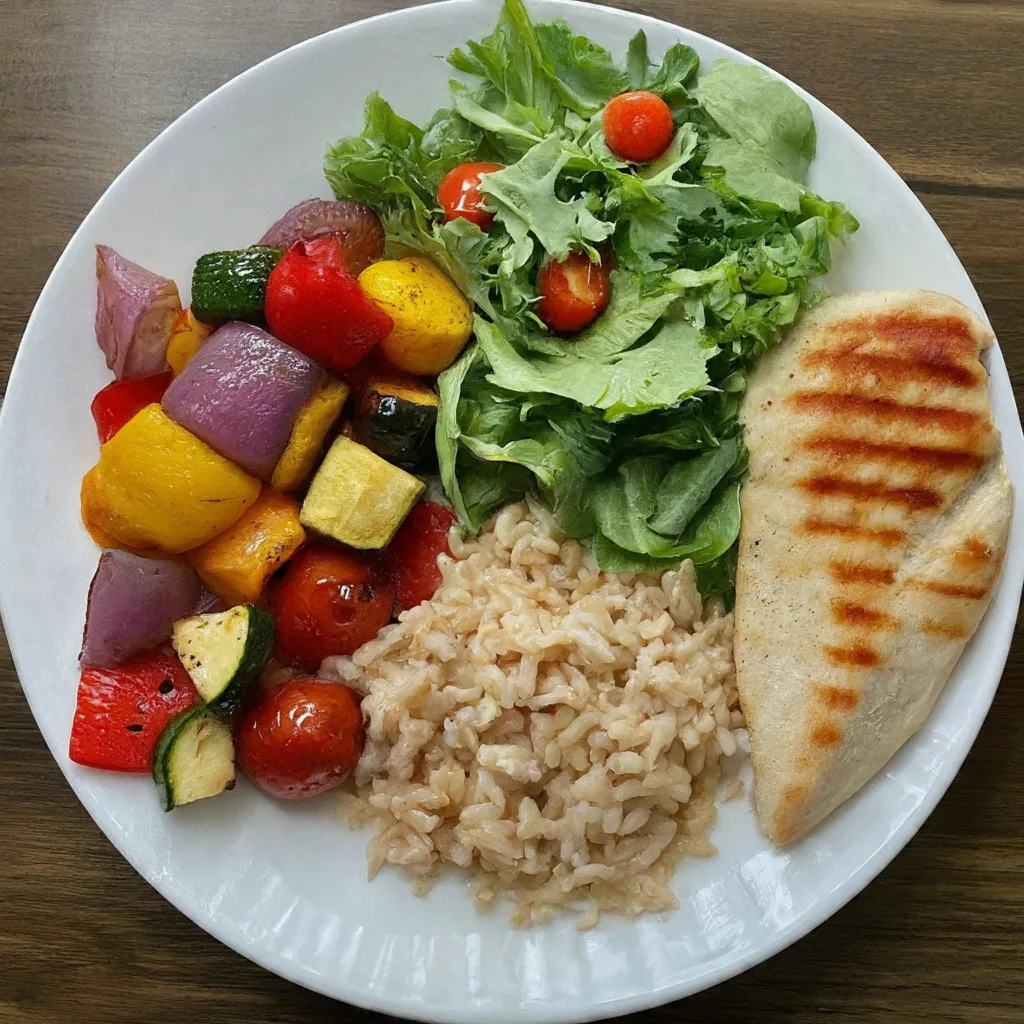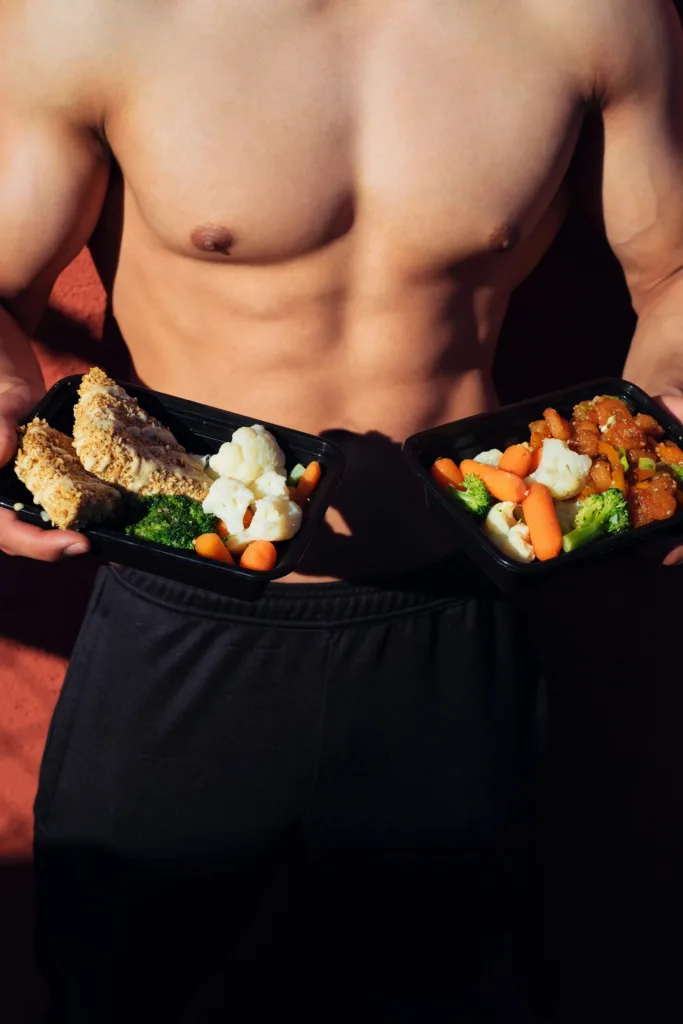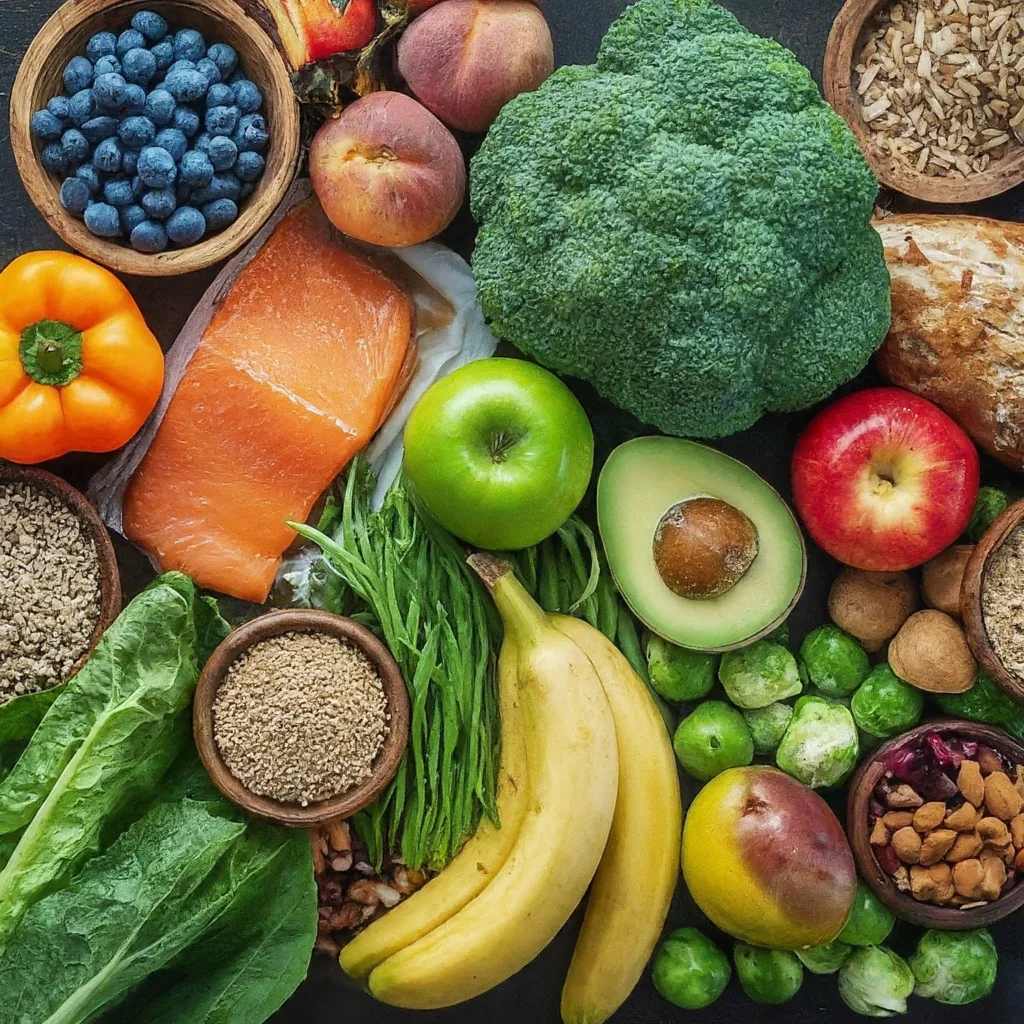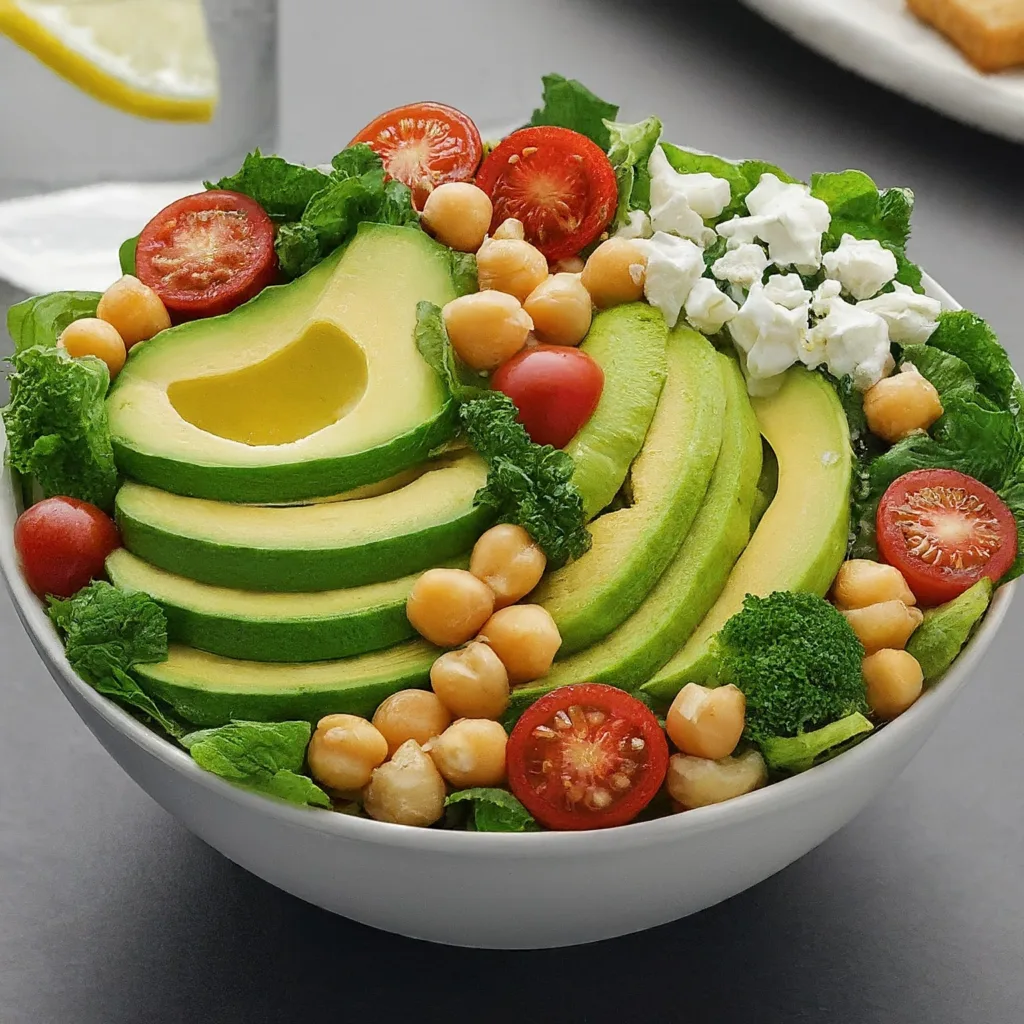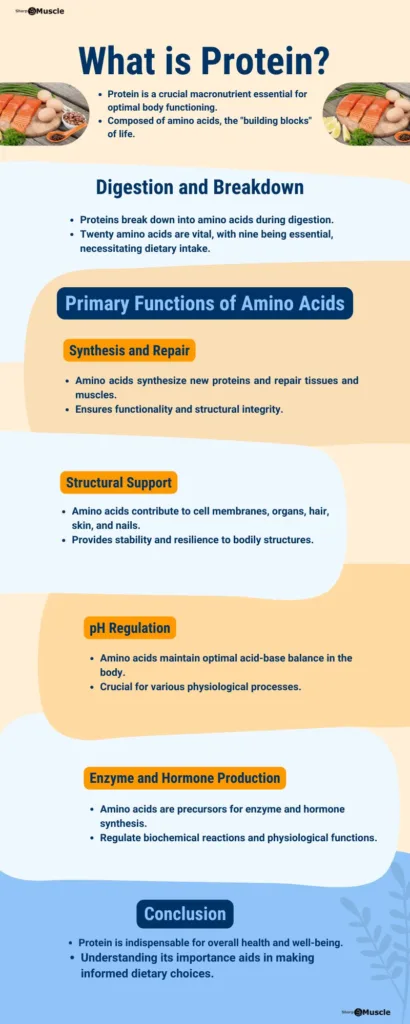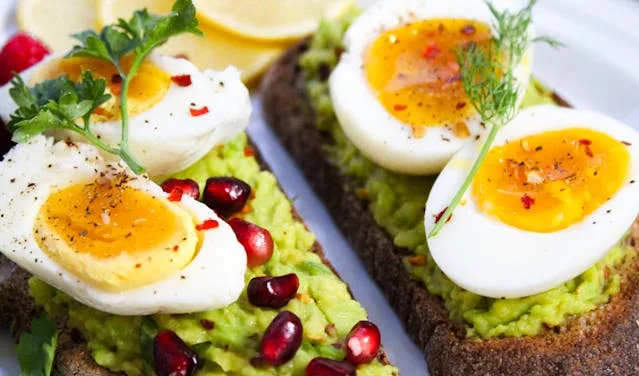Starting a healthy lifestyle involves more than just a calorie count—it’s about making those calories count. Dive into the realm of the 2600-Calorie Diet, where the focus is not just on quantity but on quality. This comprehensive guide will take you through a well-balanced meal plan, food lists, and essential insights for a successful diet.
In This “2600-Calorie Diet”
Understanding Caloric Needs
Understanding individual variations and metabolic influences helps tailor your 2600-Calorie diet plan to meet specific energy requirements.
Factors Influencing Caloric Needs
Caloric requirements vary among individuals due to several factors: Age, Gender, and Activity level. 1
Age:
- Children and adolescents generally require more calories for growth and development. 2
- Older adults may have lower caloric needs due to changes in metabolism and activity levels. 3
For example, a 25-year-old active individual may require more calories for daily activities compared to a sedentary individual of the same age. And a 35-year-old mother with two children might require more calories than a 60-year-old individual, as the demands of raising a family involve constant movement and energy expenditure.
Gender:
- Men often have higher calorie needs than women due to differences in muscle mass and metabolism. 4 5
- Example: A construction worker who spends the day lifting heavy materials will likely need more calories than an office worker who sits at a desk for most of the day.
Activity Level:
- Highly active individuals, such as athletes, may need more calories to fuel their intense physical activity. 6
- Sedentary lifestyles may require fewer calories, reducing the risk of excess energy storage as fat. 7
Example: A construction worker who spends the day lifting heavy materials will likely need more calories than an office worker who sits at a desk for most of the day.
The Significance of Metabolism in Determining Calorie Needs
Metabolism, the process by which the body converts food into energy, plays a crucial role in determining calorie needs.
Basal Metabolic Rate (BMR):
- The calories needed at rest to maintain basic physiological functions. 8
- Influenced by factors like age, gender, and body composition. 9
Example: Two individuals with the same age and weight may have different caloric needs if one has a higher percentage of muscle mass, contributing to a higher BMR.
Physical Activity Level:
- Calories burned during exercise and daily activities contribute to total energy expenditure. 10
- Regular exercise can boost metabolism and impact overall caloric needs. 11
Example: A professional athlete engaged in rigorous training sessions will burn more calories than a person with a sedentary lifestyle.
Thermic Effect of Food (TEF): Foods that are harder to digest, such as protein-rich foods, may slightly increase calorie expenditure during digestion. 12 Example: A diet rich in protein requires more energy for digestion, contributing to a slightly higher overall calorie expenditure.
Basics of Calorie Counting
A calorie is a unit of measurement for energy. 13 In nutrition, it represents the amount of energy released when the body metabolizes food. The body requires a balance between calories consumed through food and beverages and calories expended through metabolism and physical activity.
Example: If an individual consumes 2500 calories in a day, it provides the energy necessary for bodily functions, daily activities, and perhaps a workout. This energy balance is essential for maintaining weight.
Methods for Calculating Daily Caloric Needs
1. Harris-Benedict Equation:
- Estimates Basal Metabolic Rate (BMR) based on age, gender, weight, and height.
- Multiplies BMR by an activity factor to estimate total daily energy expenditure (TDEE).
Harris-Benedict Equation Example:
Let’s consider a 30-year-old man who weighs 180 pounds, is 6 feet tall, and has a sedentary lifestyle.
Step 1: Apply the Formula for BMR:
- BMR = 88.362 + (13.397×weight in kg) + (4.799×height in cm) − (5.677×age)
- BMR = 88.362 + [13.397×(2.20462180 pounds)] + [4.799×(16 feet×30.48)]− (5.677×30)
- BMR ≈ 1912 calories per day
Step 2: Adjust for Activity Level:
- If he has a sedentary lifestyle, multiply the BMR by the Physical Activity Level (PAL). For a sedentary lifestyle (PAL = 1.2):
- Total Daily Energy Expenditure (TDEE) ≈ 1912 calories × 1.2
- TDEE ≈ 2294 calories per day
So, according to the Harris-Benedict Equation, this man would need approximately 2294 calories per day to maintain his current weight with his sedentary lifestyle taken into account. Adjustments can be made based on specific health and fitness goals.
2. Mifflin-St Jeor Equation:
- Similar to the Harris-Benedict Equation but considered more accurate.
- Requires input of age, gender, weight, height, and activity level.
Mifflin-St Jeor Equation Example:
Consider a 40-year-old woman who weighs 150 pounds, is 5 feet 6 inches tall, and engages in moderate physical activity.
Step 1: Convert Height and Weight:
- Convert height to inches: 5 feet 6 inches = 66 inches.
- Weight remains the same: 150 pounds.
Step 2: Apply the Formula:
- BMR = 10 × weight in kg + 6.25 × height in cm − 5 × age + constant
- BMR = 10 × (150 pounds / 2.20462) + 6.25 × (166 inches × 2.54 / 1) − 5 × 40 + 5
- BMR ≈ 1363 calories per day
Step 3: Adjust for Activity Level:
- If she has a moderate activity level, multiply the BMR by the Physical Activity Level (PAL). For moderate activity (PAL = 1.55):
- Total Daily Energy Expenditure (TDEE) ≈ 1363 calories × 1.55
- TDEE ≈ 2111 calories per day
So, based on the Mifflin-St Jeor Equation, this woman would need approximately 2111 calories per day to maintain her current weight with her activity level taken into account. Adjustments can then be made based on her specific health goals.
3. Online Calculators and Apps:
- Numerous tools are available to simplify calorie calculation based on individual characteristics and goals.
- Consider lifestyle factors, activity levels, and objectives when using these tools.
Understanding the basics of these calorie counting empowers individuals to make informed dietary choices tailored to their unique energy needs. Consultation with healthcare professionals or registered dietitians can provide personalized guidance.
Planning Your 2600-Calorie Diet
Planning a 2600-calorie diet requires thoughtful consideration of the macronutrient distribution. To maximize effectiveness, customize the diet according to your specific needs and goals. Optimize efficiency by streamlining your grocery list and planning meals in advance. Strive for a well-rounded balance of proteins, fats, and carbohydrates to ensure sustained energy levels.
Let’s understand the core principles of this diet, aligning it with personal aspirations.
Understanding the Basics of a 2600-Calorie Diet
The fundamentals of a 2600-calorie diet involve distributing your daily caloric intake across essential macronutrients (carbohydrates, proteins, and fats) and micronutrients to support overall health and well-being.
Macronutrient Breakdown
1. Proteins and Distribution
Proteins play a vital role in muscle repair, immune function, and overall cellular health. Maintaining a balanced distribution of protein throughout the day is essential for optimal well-being.
Dietary Recommendation: For a 2600-Calorie diet, aim to allocate approximately 30-35% of total calories to protein. This ensures an adequate intake to support your body’s various functions. Include a variety of lean protein sources for a well-rounded nutritional profile, such as poultry, fish, tofu, legumes, and dairy products.
Example Food Choices:
- Lean Chicken Breast: 30g protein per 100g
- Greek Yogurt: 15g protein per 150g
- Lentils: 18g protein per 200g
- Quinoa: 8g protein per cup
Distribution Tips:
- Incorporate a protein source into each main meal and snack to maintain sustained energy levels.
- Aim for a daily protein intake ranging from 1.2 to 2.2 grams per kilogram of body weight, adjusting based on individual activity levels and health goals.
2. Carbohydrates and Distribution
Carbohydrates serve as the body’s primary energy source, crucial for sustaining brain function and supporting optimal exercise performance. Striking the right balance in carbohydrate intake is key to maintaining energy levels throughout the day.
Dietary Recommendation: For a well-rounded, 2600-Calorie diet, target an allocation of about 45-65% of total calories from carbohydrates. Prioritize complex carbohydrates found in whole grains, fruits, and vegetables to provide sustained and steady energy.
Example Food Choices:
- Sweet Potatoes: 26g carbohydrates per 100g
- Brown Rice: 45g carbohydrates per cup
- Oats: 30g carbohydrates per 100g
- Quinoa: 39g carbohydrates per cup
Distribution Tips:
- Concentrate the majority of your carbohydrate intake around workout times to fuel your body for optimal performance and recovery.
- Aim for a balanced and varied carbohydrate intake, ensuring a mix of fiber-rich sources for sustained energy throughout the day.
3. Fats and Distribution
Healthy fats play a crucial role in hormone production, nutrient absorption, and supporting overall brain health. Choosing sources rich in unsaturated fats is key to maintaining a balanced and nourishing diet.
Dietary Recommendation: For a well-rounded, 2600-Calorie diet, aim to include approximately 20-35% of total calories from fats. Prioritize healthy fat sources such as avocados, nuts, seeds, and olive oil to enhance your nutritional profile.
Example Food Choices:
- Avocado: 15g fat per avocado
- Olive Oil: 14g fat per tablespoon
- Almonds: 14g fat per 1/4 cup
- Fatty Fish (Salmon): 13g fat per 100g
Distribution Tips:
- Incorporate a diverse range of fats into each meal to ensure a spectrum of nutritional benefits.
- Limit the intake of saturated fats and emphasize monounsaturated and polyunsaturated fats for heart health and overall well-being.
- Strive to maintain a balance, aiming for 20-35% of your total daily calorie intake to come from healthy fats.
Micronutrient Breakdown: Vitamins and Minerals
Micronutrients, including vitamins and minerals, are essential for various physiological functions, such as immune support, bone health, and enzyme activity. Achieving a diverse and balanced intake is crucial for overall well-being.
Dietary Recommendations:
- Prioritize a colorful and varied diet to ensure a broad spectrum of micronutrients.
- Aim to meet daily recommended values for key vitamins and minerals.
Example Food Choices:
- Leafy Greens (e.g., Spinach): Rich in vitamin K, vitamin A, folate, and minerals like iron and calcium.
- Citrus Fruits (e.g., Oranges): High in vitamin C, promoting immune function and collagen synthesis.
- Berries (e.g., Blueberries): Packed with antioxidants, vitamins, and minerals, such as vitamin C and manganese.
- Nuts and Seeds (e.g., Almonds): Provide vitamin E, magnesium, and other essential minerals.
- Fish (e.g., Salmon): Contains vitamin D, omega-3 fatty acids, and minerals like selenium.
Distribution Tips:
- Include a variety of colorful fruits and vegetables in each meal.
- Incorporate nuts, seeds, and whole grains for additional micronutrient diversity.
- Consider fortified foods, especially for vitamins like vitamin D and B12.
Best Foods for a 2600-Calorie Diet
Proteins: The Building Blocks
Ensure a variety of these protein sources in your 2600-calorie diet to promote optimal health, muscle maintenance, and satiety. Adjust portion sizes based on individual needs and dietary preferences.
Lean Meats:
- Chicken Breast: A versatile option, providing high-quality protein with minimal fat.
- Turkey: Lean ground turkey or turkey breast offers a lean protein source.
- Fish: Include fatty fish like salmon or lean options such as cod or tilapia.
Eggs:
- Whole Eggs: A complete protein source with essential amino acids.
- Egg Whites: Low in calories and fat, rich in pure protein.
Plant-Based Alternatives:
- Tofu: A versatile plant-based protein, suitable for various dishes.
- Lentils: Packed with protein and fiber, ideal for vegetarian and vegan diets.
- Chickpeas: A great source of protein, perfect for salads, soups, or as a snack.
Dairy Products:
- Greek Yogurt: A high-protein dairy option with probiotics for gut health.
- Cottage Cheese: Rich in protein, low in fat, and versatile in recipes.
Nuts and Seeds:
- Almonds: A nut powerhouse, offering protein, healthy fats, and micronutrients.
- Chia Seeds: Tiny seeds with a big protein punch, perfect for adding to smoothies or yogurt.
Poultry:
- Lean Turkey: Ground turkey or turkey breast provides a lean protein source.
- Chicken Thighs: Although slightly higher in fat, they offer a flavorful protein option.
Legumes:
- Black Beans: A nutrient-dense option with both protein and fiber.
- Edamame: Young soybeans with a good balance of protein and healthy fats.
Seafood:
- Salmon: A fatty fish rich in omega-3 fatty acids and high-quality protein.
- Shrimp: A low-calorie, high-protein seafood option.
Carbohydrates: Fueling Your Day
Incorporate these complex carbohydrates into your daily meals to provide a steady source of energy for your active lifestyle. Adjust portion sizes based on individual needs and activity levels.
Whole Grains:
- Brown Rice: A nutrient-rich whole grain providing complex carbohydrates.
- Quinoa: A versatile grain rich in protein and fiber, perfect for a variety of dishes.
- Oats: Slow-digesting oats offer sustained energy and essential nutrients.
Legumes:
- Chickpeas: High in carbohydrates, fiber, and protein, ideal for salads or stews.
- Black Beans: A nutritious choice with a mix of carbohydrates and fiber.
Starchy Vegetables:
- Sweet Potatoes: Packed with complex carbohydrates, vitamins, and minerals.
- Butternut Squash: A flavorful option rich in carbohydrates and antioxidants.
Whole Wheat Products:
- Whole Wheat Bread: A staple providing complex carbohydrates for energy.
- Whole Wheat Pasta: A tasty way to incorporate complex carbs into your meals.
Fruits:
- Bananas: A quick and convenient source of natural sugars and carbohydrates.
- Berries: Low in calories, high in fiber and antioxidants.
Root Vegetables:
- Carrots: A crunchy snack loaded with carbohydrates and beta-carotene.
- Beets: A nutrient-dense root vegetable with natural sugars and fiber.
Dairy:
- Low-Fat Yogurt: A dairy option with carbohydrates and beneficial probiotics.
- Milk: A classic choice providing carbohydrates, protein, and essential nutrients.
Whole Grain Cereals:
- Whole Grain Oat Cereal: A breakfast option with complex carbohydrates and fiber.
- Granola: A mix of grains, nuts, and dried fruits for a carb-packed snack.
Pulses:
- Lentils: High in fiber and carbohydrates, making them an excellent plant-based choice.
- Peas: A versatile vegetable with a mix of carbohydrates and protein.
Rye: Rye Bread: An alternative to traditional wheat bread, offering complex carbohydrates.
Fats: The Healthy Indulgence
Incorporating these healthy fats into your 2600-calorie diet supports brain health, nutrient absorption, and overall well-being. Adjust portion sizes based on individual needs and dietary preferences.
- Avocado: A creamy and versatile source of monounsaturated fats, offering a satisfying texture to salads or sandwiches.
- Nuts and Seeds:
- Almonds: A nutrient-dense nut providing heart-healthy monounsaturated fats and vitamin E.
- Chia Seeds: Tiny seeds packed with omega-3 fatty acids, fiber, and essential minerals.
- Olive Oil: A staple in Mediterranean cuisine, rich in monounsaturated fats and antioxidants, perfect for salads and cooking.
- Fatty Fish:
- Salmon: A fatty fish containing omega-3 fatty acids, essential for heart health and overall well-being.
- Mackerel: Another oily fish option providing beneficial fats.
- Nut Butters:
- Natural Peanut Butter: A spread rich in healthy fats and protein, ideal for toast or as a dip.
- Almond Butter: A tasty alternative with a good balance of monounsaturated fats.
- Flaxseeds: Packed with omega-3 fatty acids and fiber, easily added to smoothies or yogurt.
- Dark Chocolate (70% cocoa or higher): A delightful treat with antioxidants and monounsaturated fats.
- Coconut:
- Coconut Oil: A plant-based oil with a unique flavor, suitable for cooking and baking.
- Coconut Milk: An alternative to traditional dairy, adding richness to various dishes.
- Walnuts: A tasty nut rich in omega-3 fatty acids, making it a heart-healthy snack.
- Sunflower Seeds: A convenient and crunchy snack containing healthy fats and vitamin E.
Vitamins and Minerals:
Ensuring a colorful array of fruits and vegetables in your diet provides a wide spectrum of vitamins, minerals, and antioxidants essential for overall health and well-being. Adjust portion sizes based on individual needs and dietary preferences.
- Leafy Greens:
- Spinach: Packed with iron, calcium, and vitamins A and K.
- Kale: A nutrient powerhouse with vitamins C and K, and minerals like manganese.
- Citrus Fruits:
- Oranges: A vitamin C-rich fruit supporting immune function.
- Grapefruits: Provide vitamins A and C, along with fiber.
- Berries:
- Blueberries: Rich in antioxidants, vitamins C and K, and manganese.
- Strawberries: A delicious source of vitamin C, manganese, and folate.
- Cruciferous Vegetables:
- Broccoli: Packed with vitamin C, folate, and fiber.
- Cauliflower: A versatile vegetable rich in vitamins C and K.
- Root Vegetables:
- Carrots: High in beta-carotene, supporting eye health.
- Beets: Contain vitamins A and C, plus minerals like potassium.
- Bell Peppers:
- Red Bell Peppers: Provide vitamin C, vitamin A, and antioxidants.
- Yellow Bell Peppers: Rich in vitamin C and B-complex vitamins.
- Tomatoes:
- Tomatoes: A source of vitamins C and K, and the antioxidant lycopene.
- Sweet Potatoes:
- Sweet Potatoes: Packed with vitamins A and C, fiber, and potassium.
- Nuts and Seeds:
- Almonds: Offer vitamin E, magnesium, and essential minerals.
- Sunflower Seeds: Contain vitamin E, copper, and selenium.
- Fatty Fish:
- Salmon: A nutrient-dense fish with vitamin D, omega-3 fatty acids, and B vitamins.
- Dairy Products:
- Greek Yogurt: Provides calcium, probiotics, and B vitamins.
- Cheese: Contains calcium, phosphorus, and vitamin B12.
- Legumes:
- Lentils: A plant-based source of iron, folate, and fiber.
- Chickpeas: Rich in vitamins B6 and C, and essential minerals.
The 2600-Calorie Diet Chart in Action
Here’s a 2600-calorie diet meal plan, strategic approach to balancing macronutrients and micronutrients within a daily intake of 2600 calories. This tailored plan serves as a foundation for both weight maintenance and gaining lean muscle mass, aligning the achieving fitness goals with a 2600-Calorie Diet.
Remember that individual nutritional needs can vary, so adjust portion sizes and specific food choices based on your preferences and dietary requirements.
Monday’s 2600-Calorie Meal Plan
- Breakfast (8-9am): 80g of oats combined with 1 scoop of whey protein, half an apple, 9-10 almonds, a sprinkle of cinnamon, and 1 multivitamin supplement.
- Mid-morning Snack (10-11am): A mix of 2 whole eggs and 6 egg whites, accompanied by 3 slices of multigrain bread, 1 teaspoon of jam, and half a banana.
- Lunch (1-2pm): A balanced plate consisting of 220g of rice, 110g of kidney beans, 7 egg whites, assorted vegetables such as peas, carrots, and bell pepper, and a modest 1/2 teaspoon of ghee or coconut.
- Afternoon Snack (3-4pm): Enjoy 3 rice cakes with a spread of 1.5 teaspoons of peanut butter, accompanied by 240ml of low-fat milk. Optionally, include boiled egg whites to boost protein intake.
- Post-workout: Following your workout, consume 1-2 scoops of whey protein mixed in 300ml of water. Add 3g of creatine and 3 dates (khajoor) for replenishing energy. Alternatively, opt for 6-10 boiled egg whites if whey protein is not preferred.
- Dinner (8-9pm): For dinner, savor 200g of black lentils paired with 140g of brown rice. Cook with 1/2 teaspoon of coconut oil, and complement the meal with a half plate of mixed salad. Conclude the day with 1g of fish oil or omega-3 supplementation for essential fatty acids.
Adjust portion sizes based on personal preferences and nutritional needs, and consider consulting a healthcare professional or nutritionist for personalized advice.
Tuesday’s 2600-Calorie Meal Plan
Breakfast (8-9am):
- Scrambled tofu with spinach and cherry tomatoes, cooked in 1 teaspoon of olive oil.
- 1 cup of cooked quinoa with sliced strawberries and a sprinkle of chia seeds.
- 1 medium-sized orange for added vitamin C.
Mid-morning Snack (10-11am):
- Smoothie made with 1 cup of Greek yogurt, a handful of blueberries, 1 tablespoon of almond butter, and a splash of almond milk.
- 1 medium-sized pear for natural sweetness.
Lunch (1-2pm):
- Grilled chicken breast seasoned with herbs, served with a side of 150g sweet potato wedges.
- Quinoa salad with mixed vegetables (cucumber, bell peppers, and cherry tomatoes) dressed in a light vinaigrette.
- 1 tablespoon of guacamole for healthy fats.
Afternoon Snack (3-4pm):
- 2 rice cakes topped with 2 tablespoons of hummus.
- 1 cup of mixed berries (strawberries, blueberries, and raspberries).
- 10 raw almonds for added crunch and healthy fats.
Post-workout:
- Protein smoothie made with 2 scoops of whey protein, 1 banana, and 250ml of almond milk.
- 1 small baked sweet potato for replenishing glycogen stores.
Dinner (8-9pm):
- Baked salmon fillet seasoned with lemon and dill.
- Quinoa and black bean bowl with sautéed broccoli, cauliflower, and carrots.
- Mixed green salad with avocado slices and a light olive oil dressing.
Adjust portion sizes based on personal preferences and nutritional needs. Remember to stay hydrated throughout the day, and consult with a healthcare professional or nutritionist for personalized advice.
Wednesday’s 2600-Calorie Meal Plan
Breakfast (8-9am):
- Vegetable omelet made with 3 whole eggs, spinach, bell peppers, and tomatoes cooked in 1 teaspoon of olive oil.
- 1 cup of cooked steel-cut oats topped with sliced banana and a sprinkle of cinnamon.
- A small handful of walnuts for added crunch and healthy fats.
Mid-morning Snack (10-11am):
- 1 serving of cottage cheese with pineapple chunks.
- 2 whole grain rice cakes spread with 1 tablespoon of almond butter.
Lunch (1-2pm):
- Grilled turkey burger patty served on a whole wheat bun with lettuce, tomato, and a slice of avocado.
- Quinoa salad with mixed greens, cherry tomatoes, cucumber, and feta cheese.
- 1 medium-sized apple for a refreshing touch.
Afternoon Snack (3-4pm):
- Greek yogurt parfait with layers of low-fat Greek yogurt, mixed berries, and a handful of granola.
- 1 medium-sized orange for additional vitamin C.
Post-workout:
- Protein shake made with 2 scoops of whey protein, 1 tablespoon of flaxseeds, and 250ml of almond milk.
- 1 medium-sized banana for quick energy replenishment.
Dinner (8-9pm):
- Baked cod fillet with a squeeze of lemon, served with quinoa pilaf and steamed asparagus.
- Mixed vegetable stir-fry with tofu, broccoli, carrots, and snap peas.
- A small serving of dark chocolate for a delightful end to the day.
Adjust portion sizes based on personal preferences and nutritional needs. Stay hydrated by drinking water throughout the day, and consult with a healthcare professional or nutritionist for personalized advice.
Thursday’s 2600-Calorie Meal Plan
Breakfast (8-9am):
- Smoothie bowl made with blended acai, mixed berries, and 1 banana. Topped with a handful of granola, chia seeds, and sliced almonds.
- Scrambled eggs with diced tomatoes, spinach, and a sprinkle of feta cheese.
Mid-morning Snack (10-11am):
- 1 cup of low-fat cottage cheese with sliced peaches.
- A small handful of pistachios for added protein and healthy fats.
Lunch (1-2pm):
- Quinoa and black bean stuffed bell peppers, baked to perfection.
- Mixed greens salad with cherry tomatoes, cucumber, and a light balsamic vinaigrette.
- 1 medium-sized apple for natural sweetness.
Afternoon Snack (3-4pm):
- Hummus and vegetable platter with carrot sticks, cucumber slices, and cherry tomatoes.
- 2 rice cakes spread with 2 tablespoons of almond butter.
Post-workout:
- Protein smoothie made with 2 scoops of plant-based protein, 1 cup of unsweetened almond milk, and a small banana.
- 1 small sweet potato, baked and seasoned with a pinch of cinnamon.
Dinner (8-9pm):
- Grilled chicken breast marinated in lemon and herbs.
- Quinoa and vegetable stir-fry with broccoli, bell peppers, and snap peas.
- Steamed edamame beans for an additional plant-based protein source.
Adjust portion sizes based on personal preferences and nutritional needs. As always, stay well-hydrated with water throughout the day, and consider consulting with a healthcare professional or nutritionist for personalized advice.
Friday’s 2600-Calorie Meal Plan
Breakfast (8-9am):
- Overnight oats made with 1 cup of rolled oats, almond milk, chia seeds, and topped with sliced strawberries and a dollop of Greek yogurt.
- Veggie omelet with 3 whole eggs, diced bell peppers, onions, and spinach, cooked in 1 teaspoon of olive oil.
Mid-morning Snack (10-11am):
- Protein smoothie with 1 scoop of whey protein, 1 cup of mixed berries, and 1 tablespoon of flaxseeds.
- 1 medium-sized pear for natural sweetness.
Lunch (1-2pm):
- Grilled shrimp and quinoa bowl with roasted vegetables (zucchini, cherry tomatoes, and asparagus).
- Mixed green salad with avocado slices and a light lemon vinaigrette.
- A serving of mixed fruit salad for dessert.
Afternoon Snack (3-4pm):
- Cottage cheese parfait with layers of low-fat cottage cheese, pineapple chunks, and a sprinkle of crushed almonds.
- 2 whole grain rice cakes with 2 tablespoons of hummus.
Post-workout:
- Protein bar with a balanced ratio of protein, carbohydrates, and fats.
- 1 small banana for quick energy replenishment.
Dinner (8-9pm):
- Baked cod fillet with a drizzle of pesto, served with quinoa and sautéed kale.
- Roasted sweet potato wedges with a touch of olive oil.
- A handful of mixed nuts (walnuts, almonds, and pistachios) for added healthy fats.
Adjust portion sizes based on personal preferences and nutritional needs. Stay hydrated with water throughout the day, and consider consulting with a healthcare professional or nutritionist for personalized advice.
Saturday’s 2600-Calorie Meal Plan
Breakfast (8-9am):
- Scrambled tofu with diced bell peppers, onions, and spinach, cooked in 1 teaspoon of olive oil.
- 1 cup of cooked quinoa mixed with sliced banana and topped with a sprinkle of flaxseeds.
Mid-morning Snack (10-11am):
- Greek yogurt parfait with layers of low-fat Greek yogurt, mixed berries, and a handful of granola.
- 1 medium-sized apple for added freshness.
Lunch (1-2pm):
- Grilled chicken breast salad with mixed greens, cherry tomatoes, cucumber, and a light balsamic vinaigrette.
- Quinoa and black bean bowl with sautéed broccoli and bell peppers.
- 1 tablespoon of guacamole for healthy fats.
Afternoon Snack (3-4pm):
- Smoothie made with 1 scoop of whey protein, 1 cup of unsweetened almond milk, and a mix of berries.
- 2 rice cakes spread with 2 tablespoons of almond butter.
Post-workout:
- Protein smoothie with 2 scoops of plant-based protein, 1 banana, and 250ml of almond milk.
- 1 small baked sweet potato for quick carbohydrate replenishment.
Dinner (8-9pm):
- Baked salmon fillet with lemon and herbs.
- Quinoa and vegetable stir-fry with asparagus, snap peas, and carrots.
- Steamed broccoli drizzled with olive oil for added flavor.
Adjust portion sizes based on personal preferences and nutritional needs. Ensure to stay well-hydrated with water throughout the day. As always, consult with a healthcare professional or nutritionist for personalized advice.
Sunday’s 2600-Calorie Meal Plan
Breakfast (8-9am):
- Quinoa breakfast bowl with 1 cup of cooked quinoa, almond milk, sliced strawberries, and a drizzle of honey.
- Scrambled eggs with diced tomatoes and spinach, cooked in 1 teaspoon of olive oil.
Mid-morning Snack (10-11am):
- Cottage cheese with pineapple chunks and a handful of mixed nuts (almonds, walnuts, and pistachios).
- 2 whole grain rice cakes with 2 tablespoons of hummus.
Lunch (1-2pm):
- Grilled turkey burger on a whole wheat bun with lettuce, tomato, and a slice of avocado.
- Mixed greens salad with cucumber, cherry tomatoes, and a light lemon vinaigrette.
- 1 medium-sized orange for a burst of vitamin C.
Afternoon Snack (3-4pm):
- Protein smoothie made with 1 scoop of whey protein, 1 cup of mixed berries, and 1 tablespoon of flaxseeds.
- 1 medium-sized pear for natural sweetness.
Post-workout:
- Protein bar with a balanced ratio of protein, carbohydrates, and fats.
- 1 small banana for quick energy replenishment.
Dinner (8-9pm):
- Baked cod fillet with a squeeze of lemon, served with quinoa pilaf and steamed asparagus.
- Mixed vegetable stir-fry with tofu, broccoli, carrots, and snap peas.
- A small serving of dark chocolate for a delightful end to the day.
Bottom line:
FAQs (Frequently Asked Questions)
- Osilla EV, Safadi AO, Sharma S. “Calories.” [Updated 2022 Sep 12]. In: StatPearls [Internet]. Treasure Island (FL): StatPearls Publishing; 2024 Jan-. Available from: https://www.ncbi.nlm.nih.gov/books/NBK499909/.[↩]
- Lassi Z, Moin A, Bhutta Z. “Nutrition in Middle Childhood and Adolescence.” In: Bundy DAP, Silva Nd, Horton S, et al., editors. Child and Adolescent Health and Development. 3rd edition. Washington (DC): The International Bank for Reconstruction and Development / The World Bank; 2017 Nov 20. Chapter 11. Available from: https://www.ncbi.nlm.nih.gov/books/NBK525242/. doi: 10.1596/978-1-4648-0423-6_ch11.[↩]
- Roberts SB, Rosenberg I. “Nutrition and aging: changes in the regulation of energy metabolism with aging.” Physiol Rev. 2006 Apr;86(2):651-67. doi: 10.1152/physrev.00019.2005. PMID: 16601270.[↩]
- Del-Cuerpo I, Jerez-Mayorga D, Chirosa-Ríos LJ, Morenas-Aguilar MD, Mariscal-Arcas M, López-Moro A, Delgado-Floody P. “Males Have a Higher Energy Expenditure than Females during Squat Training.” Nutrients. 2023 Aug 4;15(15):3455. doi: 10.3390/nu15153455. PMID: 37571392; PMCID: PMC10421381.[↩]
- Wu BN, O’Sullivan AJ. “Sex differences in energy metabolism need to be considered with lifestyle modifications in humans.” J Nutr Metab. 2011;2011:391809. doi: 10.1155/2011/391809. Epub 2011 Jun 6. PMID: 21773020; PMCID: PMC3136178.[↩]
- Bytomski JR. “Fueling for Performance. Sports Health.” 2018 Jan/Feb;10(1):47-53. doi: 10.1177/1941738117743913. Epub 2017 Nov 27. PMID: 29173121; PMCID: PMC5753973.[↩]
- Hill JO, Wyatt HR, Peters JC. “Energy balance and obesity.” Circulation. 2012 Jul 3;126(1):126-32. doi: 10.1161/CIRCULATIONAHA.111.087213. PMID: 22753534; PMCID: PMC3401553.[↩]
- Westerterp KR. “Control of Energy Expenditure in Humans.” [Updated 2022 Mar 21]. In: Feingold KR, Anawalt B, Blackman MR, et al., editors. Endotext [Internet]. South Dartmouth (MA): MDText.com, Inc.; 2000-. Available from: https://www.ncbi.nlm.nih.gov/books/NBK278963/.[↩]
- Institute of Medicine (US) Subcommittee on Military Weight Management. Weight Management: State of the Science and Opportunities for Military Programs. Washington (DC): National Academies Press (US); 2004. 3, “Factors That Influence Body Weight.” Available from: https://www.ncbi.nlm.nih.gov/books/NBK221834/.[↩]
- DipABLM, E. P. F. M. F. (2016, May 12). “Exercise: It does so much more than burn calories“. Harvard Health.[↩]
- Molé PA. “Impact of energy intake and exercise on resting metabolic rate.” Sports Med. 1990 Aug;10(2):72-87. doi: 10.2165/00007256-199010020-00002. PMID: 2204100.[↩]
- Pesta DH, Samuel VT. “A high-protein diet for reducing body fat: mechanisms and possible caveats.” Nutr Metab (Lond). 2014 Nov 19;11(1):53. doi: 10.1186/1743-7075-11-53. PMID: 25489333; PMCID: PMC4258944.[↩]
- Hargrove JL. ‘Does the history of food energy units suggest a solution to “Calorie confusion”?’ Nutr J. 2007 Dec 17;6:44. doi: 10.1186/1475-2891-6-44. PMID: 18086303; PMCID: PMC2238749.[↩]


